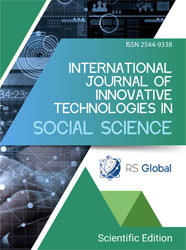A STUDY REVIEW OF CANNABIS USE WITH CANCER PATIENTS
Abstract
Introduction: Cancer patients frequently experience debilitating symptoms such as pain, chemotherapy-induced nausea and vomiting (CINV), and cachexia, significantly impacting their quality of life. Cannabinoids have been suggested as potential therapeutic agents for these conditions. Our review takes a look into medical studies to show potential benefits and side effects of the drug.
Aim of Study: This systematic review is looking for evidence on the efficacy and safety of cannabinoids in managing chronic cancer pain, CINV, and cancer-related appetite and cachexia.
Materials and Methods: A systematic review of PubMed and Google scholar literature was searched using the terms "cannabis" "cancer," and either "pain" or "CCINV” and "cachexia" with studies read for relevance and objectivity.
Results: The evidence regarding cannabinoids for chronic cancer pain is mixed, with some studies suggesting benefits for neuropathic pain, while others show limited efficacy, particularly in opioid-resistant cases. For CINV, certain cannabinoid combinations (e.g., THC:CBD, nabilone) demonstrated effectiveness when standard antiemetics were insufficient, however with potential side effects. The impact of cannabinoids on appetite and cachexia is also inconclusive, with some studies showing potential benefits, but larger trials often failing to demonstrate significant advantages over placebo.
Conclusion: There are many myths and disinformation about cannabis in the public eye. Some glorify it, others condemn it. Studies on CINV and neuropathic pain clearly show that cannabis has antiemetic and analgesic properties. Unfortunately, cannabis does not have an analgesic effect in cancer pain, especially when it comes to pain that is resistant to opioid treatment. When it comes to stimulating appetite and cachexia, the research is very inconclusive, and further studies are needed to evaluate this problem.
References
Charitos IA, Gagliano-Candela R, Santacroce L, Bottalico L. The Cannabis Spread throughout the Continents and its Therapeutic Use in History. Endocr Metab Immune Disord Drug Targets. 2021;21(3):407-417. doi:10.2174/1871530320666200520095900
Lapierre É, Monthony AS, Torkamaneh D. Genomics-based taxonomy to clarify cannabis classification. Genome. 2023;66(8):202-211. doi:10.1139/gen-2023-0005
McPartland JM. Cannabis sativa and Cannabis indica versus “Sativa” and “Indica.” In: Chandra S, Lata H, ElSohly MA, eds. Cannabis Sativa L. - Botany and Biotechnology. Springer International Publishing; 2017:101-121. doi:10.1007/978-3-319-54564-6_4
Costa B. On the Pharmacological Properties of Δ9 ‐Tetrahydrocannabinol (THC). Chem Biodivers. 2007;4(8):1664-1677. doi:10.1002/cbdv.200790146
Larsen C, Shahinas J. Dosage, Efficacy and Safety of Cannabidiol Administration in Adults: A Systematic Review of Human Trials. J Clin Med Res. 2020;12(3):129-141. doi:10.14740/jocmr4090
Black N, Stockings E, Campbell G, et al. Cannabinoids for the treatment of mental disorders and symptoms of mental disorders: A systematic review and meta-analysis. Lancet Psychiatry. 2019;6(12):995-1010. doi:10.1016/S2215-0366(19)30401-8
Navarrete F, García-Gutiérrez MS, Gasparyan A, Austrich-Olivares A, Manzanares J. Role of Cannabidiol in the Therapeutic Intervention for Substance Use Disorders. Front Pharmacol. 2021;12:626010. doi:10.3389/fphar.2021.626010
Normandin MD, Zheng MQ, Lin KS, et al. Imaging the cannabinoid CB1 receptor in humans with [11C]OMAR: assessment of kinetic analysis methods, test–retest reproducibility, and gender differences. J Cereb Blood Flow Metab. 2015;35(8):1313-1322. doi:10.1038/jcbfm.2015.46
Haney M, Vallée M, Fabre S, et al. Signaling-specific inhibition of the CB1 receptor for cannabis use disorder: phase 1 and phase 2a randomized trials. Nat Med. 2023;29(6):1487-1499. doi:10.1038/s41591-023-02381-w
Di Marzo V. The endocannabinoidome as a substrate for noneuphoric phytocannabinoid action and gut microbiome dysfunction in neuropsychiatric disorders. Dialogues Clin Neurosci. 2020;22(3):259-269. doi:10.31887/DCNS.2020.22.3/vdimarzo
Hameed M, Prasad S, Jain E, et al. Medical Cannabis for Chronic Nonmalignant Pain Management. Curr Pain Headache Rep. 2023;27(4):57-63. doi:10.1007/s11916-023-01101-w
Update on Prevalence of Pain in Patients With Cancer: Systematic Review and Meta-Analysis - Journal of Pain and Symptom Management. Accessed March 15, 2025. https://www.jpsmjournal.com/article/S0885-3924(16)30048-3/fulltext
Riggs PK, Vaida F, Rossi SS, et al. A pilot study of the effects of cannabis on appetite hormones in HIV-infected adult men. Brain Res. 2012;1431:46-52. doi:10.1016/j.brainres.2011.11.001
Hammond S, Erridge S, Mangal N, Pacchetti B, Sodergren MH. The Effect of Cannabis-Based Medicine in the Treatment of Cachexia: A Systematic Review and Meta-Analysis. Cannabis Cannabinoid Res. 2021;6(6):474-487. doi:10.1089/can.2021.0048
Kayser RR, Snorrason I, Haney M, Lee FS, Simpson HB. The Endocannabinoid System: A New Treatment Target for Obsessive Compulsive Disorder? Cannabis Cannabinoid Res. 2019;4(2):77-87. doi:10.1089/can.2018.0049
Lohr L. Chemotherapy-Induced Nausea and Vomiting. Cancer J. 2008;14(2):85-93. doi:10.1097/PPO.0b013e31816a0f07
Poole K, Froggatt K. Loss of weight and loss of appetite in advanced cancer: a problem for the patient, the carer, or the health professional? Palliat Med. 2002;16(6):499-506. doi:10.1191/0269216302pm593oa
Jeddi HM, Busse JW, Sadeghirad B, et al. Cannabis for medical use versus opioids for chronic non-cancer pain: a systematic review and network meta-analysis of randomised clinical trials. BMJ Open. 2024;14(1):e068182. doi:10.1136/bmjopen-2022-068182
Ar K, Bhatnagar S. Use of cannabis and cannabinoids in palliative care setting. Curr Opin Anaesthesiol. 2020;33(6):841-546. doi:10.1097/ACO.0000000000000933
Bar-Lev Schleider L, Mechoulam R, Lederman V, et al. Prospective analysis of safety and efficacy of medical cannabis in large unselected population of patients with cancer. Eur J Intern Med. 2018;49:37-43. doi:10.1016/j.ejim.2018.01.023
Johnson JR, Lossignol D, Burnell-Nugent M, Fallon MT. An Open-Label Extension Study to Investigate the Long-Term Safety and Tolerability of THC/CBD Oromucosal Spray and Oromucosal THC Spray in Patients With Terminal Cancer-Related Pain Refractory to Strong Opioid Analgesics. J Pain Symptom Manage. 2013;46(2):207-218. doi:10.1016/j.jpainsymman.2012.07.014
Portenoy RK, Ganae-Motan ED, Allende S, et al. Nabiximols for Opioid-Treated Cancer Patients With Poorly-Controlled Chronic Pain: A Randomized, Placebo-Controlled, Graded-Dose Trial. J Pain. 2012;13(5):438-449. doi:10.1016/j.jpain.2012.01.003
Portenoy RK, Ganae-Motan ED, Allende S, et al. Nabiximols for opioid-treated cancer patients with poorly-controlled chronic pain: a randomized, placebo-controlled, graded-dose trial. J Pain. 2012;13(5):438-449. doi:10.1016/j.jpain.2012.01.003
Häuser W, Welsch P, Klose P, Radbruch L, Fitzcharles MA. Efficacy, tolerability and safety of cannabis-based medicines for cancer pain: A systematic review with meta-analysis of randomised controlled trials. Schmerz. 2019;33(5):424-436. doi:10.1007/s00482-019-0373-3
Côté M, Trudel M, Wang C, Fortin A. Improving Quality of Life With Nabilone During Radiotherapy Treatments for Head and Neck Cancers: A Randomized Double-Blind Placebo-Controlled Trial. Ann Otol Rhinol Laryngol. 2016;125(4):317-324. doi:10.1177/0003489415612801
Poli P, Crestani F, Salvadori C, Valenti I, Sannino C. Medical Cannabis in Patients with Chronic Pain: Effect on Pain Relief, Pain Disability, and Psychological aspects. A Prospective Non randomized Single Arm Clinical Trial. Clin Ter. 2018;169(3):e102-e107. doi:10.7417/T.2018.2062
Hilarius DL, Kloeg PH, Van Der Wall E, Van Den Heuvel JJG, Gundy CM, Aaronson NK. Chemotherapy-induced nausea and vomiting in daily clinical practice: a community hospital-based study. Support Care Cancer. 2012;20(1):107-117. doi:10.1007/s00520-010-1073-9
Hilarius DL, Kloeg PH, Van Der Wall E, Van Den Heuvel JJG, Gundy CM, Aaronson NK. Chemotherapy-induced nausea and vomiting in daily clinical practice: a community hospital-based study. Support Care Cancer. 2012;20(1):107-117. doi:10.1007/s00520-010-1073-9
Bhattacharyya S, Morrison PD, Fusar-Poli P, et al. Opposite Effects of Δ-9-Tetrahydrocannabinol and Cannabidiol on Human Brain Function and Psychopathology. Neuropsychopharmacology. 2010;35(3):764-774. doi:10.1038/npp.2009.184
Grimison P, Mersiades A, Kirby A, et al. Oral Cannabis Extract for Secondary Prevention of Chemotherapy-Induced Nausea and Vomiting: Final Results of a Randomized, Placebo-Controlled, Phase II/III Trial. J Clin Oncol Off J Am Soc Clin Oncol. 2024;42(34):4040-4050. doi:10.1200/JCO.23.01836
Grimison P, Mersiades A, Kirby A, et al. Oral THC:CBD cannabis extract for refractory chemotherapy-induced nausea and vomiting: a randomised, placebo-controlled, phase II crossover trial. Ann Oncol Off J Eur Soc Med Oncol. 2020;31(11):1553-1560. doi:10.1016/j.annonc.2020.07.020
A review of nabilone in the treatment of chemotherapy-induced nausea and vomiting - PubMed. Accessed March 18, 2025. https://pubmed.ncbi.nlm.nih.gov/18728826/
Tisdale MJ. Mechanisms of Cancer Cachexia. Physiol Rev. 2009;89(2):381-410. doi:10.1152/physrev.00016.2008
Farokhnia M, McDiarmid GR, Newmeyer MN, et al. Effects of oral, smoked, and vaporized cannabis on endocrine pathways related to appetite and metabolism: a randomized, double-blind, placebo-controlled, human laboratory study. Transl Psychiatry. 2020;10(1):1-11. doi:10.1038/s41398-020-0756-3
Brisbois TD, Kock IH de, Watanabe SM, et al. Delta-9-tetrahydrocannabinol may palliate altered chemosensory perception in cancer patients: results of a randomized, double-blind, placebo-controlled pilot trial. Ann Oncol. 2011;22(9):2086-2093. doi:10.1093/annonc/mdq727
Strasser F, Luftner D, Possinger K, et al. Comparison of Orally Administered Cannabis Extract and Delta-9-Tetrahydrocannabinol in Treating Patients With Cancer-Related Anorexia-Cachexia Syndrome: A Multicenter, Phase III, Randomized, Double-Blind, Placebo-Controlled Clinical Trial From the Cannabis-In-Cachexia-Study-Group. J Clin Oncol. 2006;24(21):3394-3400. doi:10.1200/JCO.2005.05.1847
Jatoi A, Windschitl HE, Loprinzi CL, et al. Dronabinol versus megestrol acetate versus combination therapy for cancer-associated anorexia: a North Central Cancer Treatment Group study. J Clin Oncol Off J Am Soc Clin Oncol. 2002;20(2):567-573. doi:10.1200/JCO.2002.20.2.567
Grimison P, Mersiades A, Kirby A, et al. Oral Cannabis Extract for Secondary Prevention of Chemotherapy-Induced Nausea and Vomiting: Final Results of a Randomized, Placebo-Controlled, Phase II/III Trial. J Clin Oncol Off J Am Soc Clin Oncol. 2024;42(34):4040-4050. doi:10.1200/JCO.23.01836
Gorter RW. Cancer Cachexia and Cannabinoids. Complement Med Res. 1999;6(3):21-22. doi:10.1159/000057152
Views:
60
Downloads:
16
Copyright (c) 2025 Kacper Stępniak, Paulina Krzeszowska, Adrianna Samoraj, Jakub Zajączkowski, Karolina Marrodán-Wojtczak, Jan Wilk, Jakub Jarmołowicz, Aleksandra Kujawa, Karolina Krochmal, Radosław Kuźma

This work is licensed under a Creative Commons Attribution 4.0 International License.
All articles are published in open-access and licensed under a Creative Commons Attribution 4.0 International License (CC BY 4.0). Hence, authors retain copyright to the content of the articles.
CC BY 4.0 License allows content to be copied, adapted, displayed, distributed, re-published or otherwise re-used for any purpose including for adaptation and commercial use provided the content is attributed.















